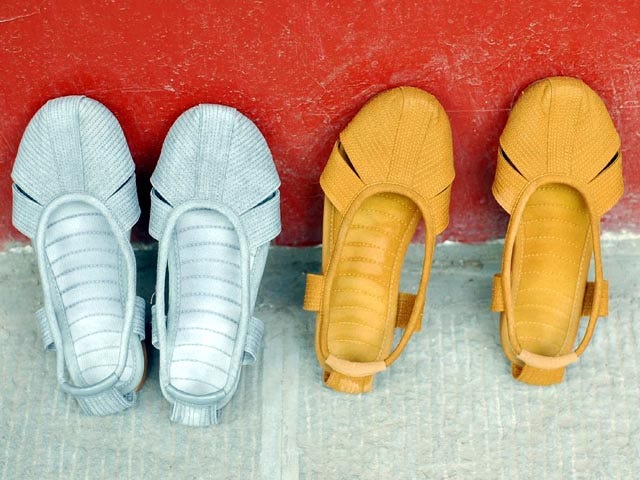Monks' Shoes
Six Paramita Shoes (Wikipedia)
The regalia of a Chinese Buddhist monk (or nun) tend to follow certain patterns. For everyday wear, the garb includes a usually-blousy shirt, and calf-length pants with the cuffs wrapped tight (or these days with elastic), with wrapped leggings below (in modern times, maybe just knee socks). The goal is generally to keep as much of the body covered as possible, and to prevent insects and other critters from entering the pant-leg and getting themselves squarshed.
For ceremonies, a robe may go over, or be substituted for, the shirt. On ultra-fancy occasions, a kasaya, a kind of drape, goes over the left shoulder, imitating the look in southern Buddhist countries where the right shoulder is completely bare. (This is the shoulder turned toward a Buddha statue when circumabulating; thus, the monk or nun walks clockwise around the figure.)
While the colors of these clothes may vary, they are generally sedate: very light browns (bordering on mustard), greys, or dark blues. Laypeople generally wear dark brown or black robes, either to services or during other official functions only.
But a notable feature of this monastic wear is the shoes. They usually have cloth uppers and rubber soles. Closed shoes--more common in cold weather--have a seam down the center of the top of the foot. But open shoes--what some might call "sandals"--have a unique construction.
Picture a band running around the ankle. From the front of this, a panel reaches forward to the sole, covering the toes. Two thinner panels run on either side of this, from the band to the sole, just about even with the ball of the foot. Another pair runs on either side of the foot, at about the middle of the arch. And a last, single panel runs down the back of the heel.
Count them up, and you'll find there are six--three in front, two on the sides, and one in back. And when I lived with the monks in a temple in Yangzhou, Jiangsu, they taught me that these were called "Six Paramita Shoes."





